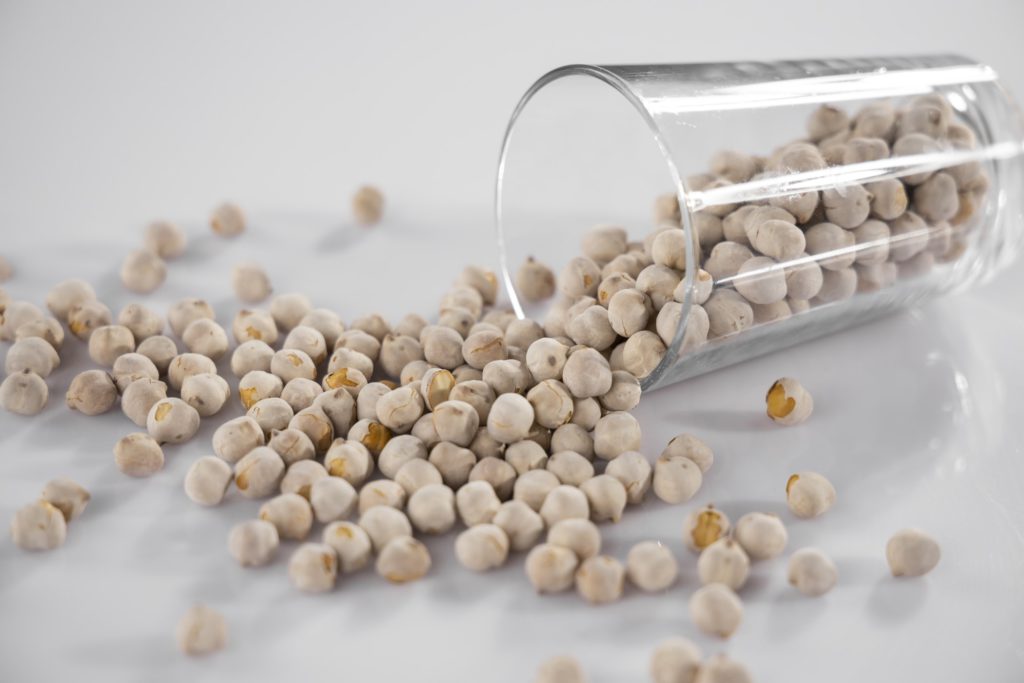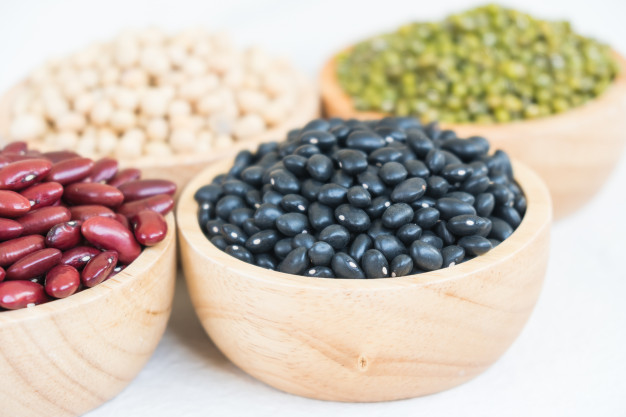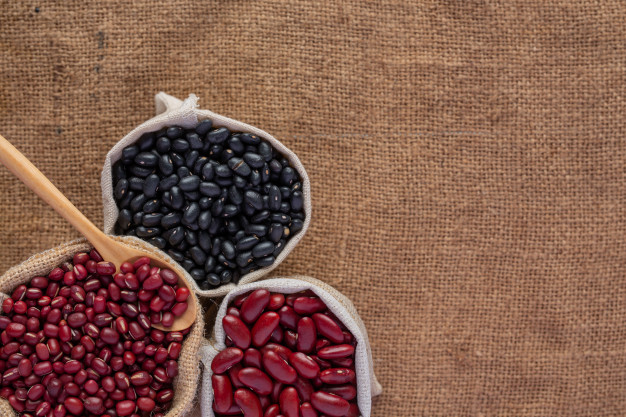The Worlds Healthiest Beans!
Beans, Beans, the Magical Fruit Pass the Beans! Many of us are guilty of avoiding beans in our diet. After all, they aren’t sweet and tasty, and for those who don’t eat them often, they can give you a stomach ache. But as it turns out, the children’s nursery rhyme is very true – beans […]
Stay Healthy
Get articles that dive deep into the details about functional foods, plant-based nutrition, health, and fitness.
Beans, Beans, the Magical Fruit
Pass the Beans!
Many of us are guilty of avoiding beans in our diet. After all, they aren’t sweet and tasty, and for those who don’t eat them often, they can give you a stomach ache. But as it turns out, the children’s nursery rhyme is very true – beans are an untapped and largely underrated source of nutrients with a long list of disease-fighting qualities.
Members of the Leguminosae family, beans, and legumes form the third largest family of flowering plants with over 20,000 species! Beans have been cultivated and consumed by humans for over 10,000 years, which also means they’re one of the longest-lived nutritional staples of our diet. A benefit to growing these, compared to meats or synthetic nutrient sources, is that they can be grown globally because of their wide variety. No matter where you are in the world, there is likely a legume that would happily grow in your backyard or greenhouse. This also makes it economical, because it doesn’t have to be shipped to the location where they are in demand.
Currently, some of the top bean consumers around the world are India, Mexico, and Chile. Nutritionists and researchers alike began to notice that countries that eat the most beans also have lower levels of diseases such as diabetes and cancer (more on this later!).
But, Are the Calories Worth It?
Lentils are a source of many micronutrients that have been forgotten as we waged war on carbohydrates, sugars, and fats in our overall diets. While they are seemingly high in calories, the majority of these calories aren’t from sugar, which is the important takeaway here. If you eat a granola bar with 300 calories, the majority of that caloric energy that fuels your body is processed sugar, but, for example, 300 calories worth of chickpeas (approximately 100 grams), only 8 grams of that is pure sugar, and it isn’t white processed sugar, but natural sugar. The remaining calories are fat, protein, fiber, and other good nutrients that keep you feeling full and satisfied for longer.
Pulses, the beans in the legume family, are also champions of controlling blood cholesterol and metabolism. They also release their sugars and carbohydrates slowly, because of their low glycemic index, and by doing so, moderate conditions like diabetes by evening blood sugar level fluctuations. In diabetics and non-diabetics alike, beans do not raise glucose at the rapid speed of sugars, because they’re high in protein, fat, and fiber, which slow carbohydrate release. So while the numbers on packages of lentils may look daunting, it’s important to note how these nutrients are absorbed and processed by our bodies. Not all calories are equal, and beans can provide many benefits when consumed regularly that processed and high-sugar foods simply don’t. Let’s go through some specific types of beans, and the health benefits they provide.

Chickpeas: Nature’s Crime Stoppers
Chickpeas, also called garbanzo beans, are said to be dated back to the Mediterranean as far back as 6,000 years ago. They contain a variety of nutrients, slow-release carbohydrates, protein, fiber, minerals, and vitamins. Some of these “Crime Stoppers” include:
- Antioxidants – reduce damage to our cells that can cause cancer and disease
- Genistein – protects against inflammation, bone loss, MS, and periodontal disease
- Biochanin A – reduces the neural inflammation that can result in Parkinson’s Disease or Alzheimer’s
- Daidzein – an anti-inflammatory that can reduce the severity of rheumatoid arthritis, and improve overall lung health
- Formonetin – improves lung repair speed and overall respiratory health
- Polyphenols – compounds are known to prevent cancer
And many others! Canned chickpeas have also been noted by researchers to lower pathogenic (harmful, dangerous) bacteria in the gut. This improves overall gut health because bacteria are the helpers that assist us with food digestion. If your bacterial levels are off in your intestines and stomach, you won’t be able to extract all of those disease-fighting nutrients from your food.
In light of all of these health benefits, chickpeas are part of a healthy, wholesome, disease-fighting diet, and should certainly be making regular appearances on your dinner plate!

Kidney Beans: The Anti-Diabetes Fighters
Red kidney beans are another powerful disease-fighting pulse. High in iron, folate, copper, manganese, and a host of other nutrients, these beans pack a healthy punch! But, there are a few studies that have been done in particular relating higher kidney bean consumption to lower risk of Type II Diabetes and cancer development. Let’s take a closer look:
- Kidney beans had high fiber and protein, resulting in lowered blood sugar levels after consumption of white rice (a fast-release carbohydrate that typically spikes blood sugar. This is attributed to their high protein and fiber content.
- Kidney beans can be used as a substitute for celiac patients for wheat-free flour while maintaining taste, texture, and other features. It has been noted that these flours reduced the speed of blood sugar increase immediately after consumption, making them a good candidate for a healthy replacement instead of wheat-based flours for baking and cooking.
- Red kidney bean coating also contains compounds that can reduce the rapid and excessive cell replication that can lead to tumor formation (i.e. cancer). In studies done against various melanoma cells, extracts of red bean kidney coat have reduced excessive cell division, and avoided cancer formation and/or worsening.
- A recent study found that it is in fact inhibition of a compound called α-glucosidase (an enzyme that breaks starches into simple sugars like glucose for absorption) that makes red kidney beans protective against diabetes. For this research, scientists obtained a hexane extract that contained triacylglycerols (TAGs – a type of dietary fat) from the coat of the beans and found that the TAGs themselves were reducing the breakdown of starches into sugars by inhibiting α-glucosidase, resulting in a slower rise in blood sugar, rather than a rapid one. All the more reason to reach for the beans!
Because of these benefits, kidney beans are highly recommended for weight loss as well, as their high protein, fiber, and TAG content makes them slow-release carbohydrates that don’t result in the fluctuation of blood sugars. This means instead of having a burst of energy, then a crash, the steady blood sugar rise will result in long-lived, enduring energy, boosting your mood, activity level, and feelings of fullness for longer than a sugar-filled, fiber-free slice of white bread.

Black Beans: For More than Just Tacos
Black beans may be a staple at Mexican restaurants and in your homemade chili, but there is more to these nuggets of nutrients than meets the eye! There are a few components of black beans that have been identified as disease-fighting, and here they are:
- Regular consumption of these beans in rats resulted in a reduction of blood pressure and improvement in overall vascular (blood vessel) health. That means these beans are a particularly healthful addition for those with high blood pressure, metabolic disorders, or high cholesterol.
- The seed coat of black beans (as well as kidney beans, coincidentally) contains antioxidants that can prevent conditions such as atherosclerosis, cancer, and optical diseases.
- Recently, black bean consumption has been linked to the reduction of cancer, particularly colorectal cancer. Even adding certain components such as phytochemicals, which are found in the seed coat of black beans, to foods like bread could be protective against this devastating disease. This means we could fight cancer by eating the foods we already know and love! It’s a win-win.
So step right up, and take another helping of that black bean curry, spicy chili, or Mexican tortilla, and load yourself up with this underrated superfood!

Navy Beans: Far From Being an “Emergency Food”, This Marine Can Work For You.
When you moved out for the first time, for some reason, you were advised to store away copious cans of navy beans, in case of an emergency, right? Along with blankets, flashlights, and the works. Few of us have ever stopped to wonder why. It’s because navy beans are so high in nutrients and carbohydrates that small quantities of them can last you a long time! This is also what got them their name – on long missions at sea, navy seals and marines used to subsist on these beans until they had access to other foods.
A comprehensive study done earlier this year identified some of the many health benefits of navy beans, including:
- Improvement of microbiota, measured in feces. Mice that consumed navy beans in addition to a high-fat diet had fewer of the pathogenic or damaging microbes that are characteristic of an obese gut microbiome (resulting in poor nutrient absorption and higher body fat).
- An improvement in intestinal barrier function, in terms of the mucus barrier. This barrier forms the first line of defense between our intestines and our body protects us from foreign bacteria and substances getting into our body from the intestines. The mucus barrier is often impaired in obese animals (including humans) but can be enhanced and repaired when navy beans are part of a regular diet.
- A reduction in serum and tissue inflammation, which can be a chronic problem for those with high-fat diets or high body fat content.
In addition, navy beans are high in fiber, B vitamins, and a myriad of minerals. They are known to be good for weight loss like other beans previously discussed, and the magnesium content is particularly good for heart health and heart attack recovery. Navy beans are also high in potassium, which can protect against atherosclerosis and other cholesterol-related diseases. This makes them another good dietary addition to your healthy diet rich in beans and lentils.

“But Wait … There’s More!”
Of course, this is only the tip of the iceberg in terms of the health benefits of bean consumption. Of the thousands of varieties of beans, each one has its own unique qualities and benefits. Pinto beans, for example, can lower high cholesterol in animals with a high-fat diet (and are likely to perform equally well in humans, though these studies are currently underway). Velvet beans have been studied extensively for their ability to reduce hypoglycemia (low blood glucose, caused by a rapid drop in blood sugar level), Parkinson’s disease, microbial diseases, and tumor formations.
Then there’s the question of the microbiome. The microbiome is the microbes or bacteria that live along your intestinal and digestive tract. Their job is to digest the food moving through your system, breaking it down, allowing the nutrients to be absorbed through linings like the intestinal wall. Once absorbed, it is free to be used by body cells. Saponin is a component of many lentils and was found to increase the number of helpful bacteria like Lactobacillus, which makes for a healthier digestive system, and more nutrients absorbed for you!
When your diet isn’t as healthy as perhaps it should be, or you are overweight your microbiome changes. That means you don’t absorb nutrients quite as well and can cause other adverse effects like stomach aches, and diarrhea. Researchers now believe beans may help here as well! In fact, one lentil called Lens culinaris Medikus has been noted to change the microbiome of rats that were on a high-fat diet, and obese. This leads researchers to believe that it may be possible to change a history of microbiome alterations from a poor diet with an addition of beans and other healthy foods. Once again, it seems this magical food source holds the key to overall health and wellness, much more than it receives credit for.
But, What About Gas?
I think we can all agree that the most common reason we avoid beans is the stomach noises, pain, and gas that they can cause. Commercially available Beano® is an anti-gas pill or liquid that you can take right before consuming beans. The primary medical ingredient is α-galactosidase, which can help break down complex carbohydrates in beans, making them easier to digest, therefore generating less gas (which is a byproduct of digestion). This is how many avoid the problem of gas while maintaining a healthy diet rich in pulses.
Interestingly, a study investigating patients with Irritable Bowel Syndrome, found that, contrary to expected results, mung beans did not generate more intestinal gas than rice or wheat products. More studies are ongoing, but this contradicts the traditional belief that beans always give you gas. Mung beans are traditionally used as a substitute for wheat in noodles in Asia, and, while not as popular in North America, seem to be a well-tolerated legume.
Another solution to reducing gas has historically been to soak pulses in water prior to cooking them. This is thought to make the coat softer and easier to digest. However, this can result in nutrient loss, making the beans less nutritionally advantageous. Indeed, we are far from understanding the structural and nutritional changes that occur when beans are soaked and boiled, which is the most common way of preparing them. Pre-soaking is also thought to release the toxins that can be contained in beans and their coats, such as EDTA, which is a preservative in canned beans.

Should You Help Yourself to Some Magic Beans?
So, let’s sum up what we now know about beans in general, in terms of the human diet. Beans are a great substitute for dietary considerations for people with celiac disease, diabetes, and practicing vegetarianism. They are high in protein (amino acids in protein are the building blocks that keep our tissues and muscles repaired and healthy) and fiber while being low in fast-released sugars and fat. They can provide many macros- and micro-nutrients that we need to keep ourselves healthy, including iron and folate. Many diseases and conditions can be improved by an addition of pulses to the diet, including cancer, diabetes, Parkinson’s and Alzheimer’s, and poor vascular and heart health. These can also stabilize our blood sugar when consumed with food items such as bread or rice, which typically release sugars into our bloodstream very quickly, giving us long-lasting energy and fewer blood sugar fluctuations. Because of this, beans can also help control appetites, and therefore aid in weight loss.
However, there are some negatives to bean consumption. Because they are so nutrient diverse with so many ingredients, allergies are a common problem. In addition, some beans such as kidney beans need to be soaked to remove toxins, though studies are ongoing. Some canned beans are extremely high in salt or EDTA, used as preservatives, which reduces their nutritional value. Gas and intestinal discomfort can occur, and too many beans can worsen Irritable Bowel Syndrome and related condition symptoms.
So here are some tips to get you on your way:
- Start by replacing some meats with beans, as they are higher in nutrients.
- Mix beans with grains such as rice, in order to reduce blood sugar fluctuations.
- Use Beano® if you find painful gas is a regular symptom from eating beans.
- Eat a variety of beans, which can be eaten hot, chilled in a salad, in hummus, or any way you choose!
- Acclimatize yourself slowly to eating beans, as too many rights from the start can upset your stomach, due to their high nutrient and fiber content.
Good luck on your new adventure, experimenting with beans. They’re a superfood that can help you on the way to being a healthier you!
Get our best articles about nutrition, health and fitness.
About Satia
Our Mission is simple. Top quality functional foods from sources that you can trust.
Learn more